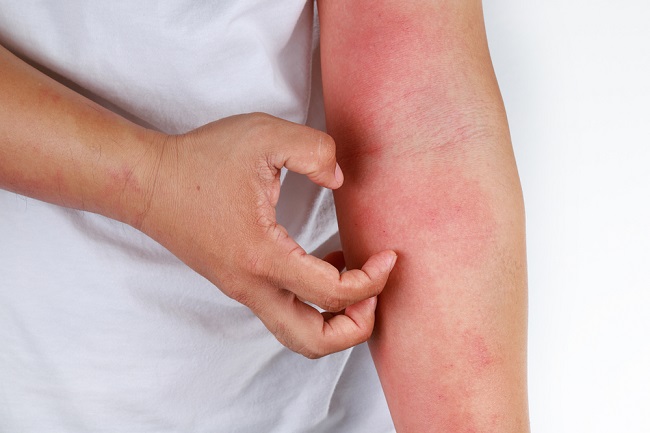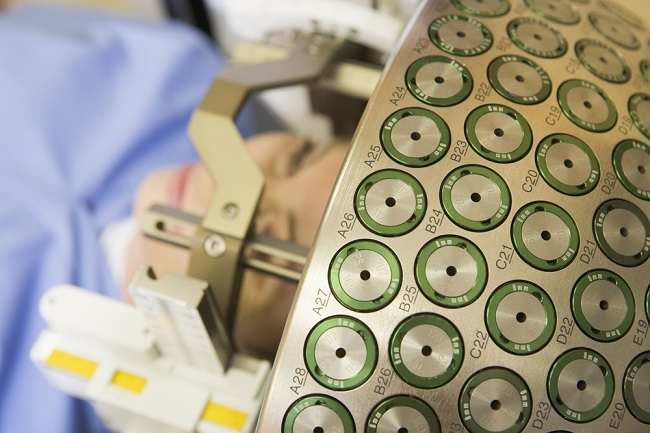Asherman's syndrome is condition when scar tissue formedin the uterus or cervix. This condition, also known as uterine adhesions, is a rare case and is most often experienced by women who have recently had surgery on the uterus, including curettage.
Basically, scar tissue is tissue that forms during the wound healing process. These wounds can arise due to various reasons, such as burns, smallpox scars, to surgical scars.

In Asherman's syndrome, scar tissue forms in the uterus, and makes the inside walls of the uterus or cervix stick together, causing the uterus to shrink in size.
Based on the severity, Asherman syndrome is divided into three, namely:
- Mild level, which is a condition when uterine adhesions occur in less than one third of the uterine cavity
- Moderate level, which is a condition when uterine adhesions occur in one third to two thirds of the uterine cavity
- Severe level, which is a condition when uterine adhesions occur in more than two-thirds of the uterine cavity or almost all parts of the uterus
Causes of Asherman's Syndrome
In most cases, Asherman's syndrome occurs after the sufferer undergoes a curettage procedure. This curettage procedure is usually performed after a miscarriage or after experiencing a condition where the placenta is retained in the uterus (placental retention).
The risk of developing Asherman's syndrome is increased if the curettage procedure is performed 2–4 weeks after delivery. In addition, the more curettage procedures performed (more than 3 times), the higher the risk of developing Asherman's syndrome.
In addition to the curettage procedure, Asherman syndrome can also occur in women who have the following conditions:
- Have you ever had a cesarean delivery or had uterine suturing to stop the bleeding?
- Undergoing radiation therapy or radiotherapy to the pelvic area
- Suffering from infection of reproductive organs
- Suffering from tuberculosis or schistosomiasis
- Suffering from endometriosis
- Have had surgery to remove fibroids or polyps?
Asherman Syndrome Symptoms
Each patient can experience different symptoms, depending on the severity. The following are the symptoms of Asherman's syndrome divided by severity:
Light level
At a mild level, some sufferers may not experience any symptoms at all, and the menstrual cycle can still run normally. However, in certain cases, sufferers can also experience symptoms such as hypomenorrhea or menstruation that only comes out a little.
Medium level
At a moderate level, the patient may experience symptoms of hypomenorrhea due to extensive uterine adhesions. If scar tissue covers part of the cervix, cramping and abdominal pain may also occur as the uterus will try harder to push the blood out.
Weight level
In severe levels, some of the symptoms that can be experienced are:
- Amenorrhea or no menstruation at all
- Abdominal cramps or pain, due to obstructed menstrual flow in the uterus
- Retrograde menstruation, which is a condition when menstrual blood flow does not flow outside the body, but into the pelvic cavity
In moderate or severe Asherman's syndrome, the sufferer may have difficulty conceiving or be at increased risk of miscarriage if pregnancy is possible.
When to go to the doctor
Check with your doctor if you experience the symptoms mentioned above. These symptoms can occur due to other health problems. Therefore, early examination is needed to get an accurate diagnosis and speed up treatment.
Asherman's Syndrome Diagnosis
To diagnose Asherman's syndrome, the doctor will start by asking the patient's symptoms or complaints, history of childbirth or curettage, and the patient's overall medical history.
After that, the doctor will perform a physical examination and several other supporting tests, such as:
- Hormone tests, to check if there are hormonal problems that trigger menstrual disorders
- Transvaginal ultrasound, to see conditions in the uterus and cervix, fallopian tubes, and pelvic area by inserting an ultrasound device through the vagina
- Hysteroscopy, to see the condition of the inside of the uterus, by inserting a small tube with a camera (hysteroscope)
- Hysterosalpingogram (HSG), to see the condition of the uterus with X-ray photos and the help of a special dye that is inserted into the uterus
- Hysterosonography, to see the condition of the uterus with ultrasound and the help of a saline solution (salt) that is inserted into the uterus
- Pelvic MRI, to see the condition of the uterus if the previous methods can't be done, for example because of the very wide adhesion of the uterus
- Blood tests, to check for other conditions that could be causing Asherman's syndrome
Asherman Syndrome Treatment
Asherman's syndrome is treated with surgery which aims to improve the size and shape of the uterine cavity. The operation is performed with the help of a hysteroscope. This operation is preferred for Asherman's syndrome patients who experience pain and wish to become pregnant.
When the operation is performed, the doctor will give the patient general anesthesia so that the patient does not feel pain. After that, the doctor will remove the scar tissue and free the adhesions in the uterus using a small surgical instrument that is attached to the end of the hysteroscope (a small tube with a camera).
After the scar tissue is removed, the doctor will place a small balloon inside the uterus for a few days. This is done to ensure that the uterine cavity remains open during the healing period and that adhesions do not reoccur.
To prevent infection due to surgery, the doctor may prescribe antibiotics. Doctors can also give the hormone estrogen which functions to help the uterine wall recover, so that Asherman's syndrome patients can experience normal menstruation.
After a few days, the doctor may perform a repeat hysteroscopy to see if the previous surgery was successful and there are no more adhesions in the uterus. After the action, there is still the possibility of adhesions reoccurring. Therefore, the doctor will advise the patient to wait 1 year to get pregnant.
Complications of Asherman's Syndrome
Complications can occur in women who become pregnant after undergoing treatment for Asherman's syndrome. Some of the complications are:
- Premature birth
- Babies born with low weight
- Abnormalities of the uterus
- Placenta accreta
Although rare, the following complications can also occur as a result of the hysteroscopic procedure:
- Bleeding
- Uterine perforation, which is a penetrating wound that occurs in the uterine wall
- Pelvic infection
Asherman Syndrome Prevention
Asherman's syndrome is difficult to prevent. However, the risk can be reduced if the curettage is performed carefully and assisted by ultrasound. In addition, giving hormone therapy to women after undergoing uterine surgery is also thought to reduce the risk of Asherman's syndrome.









